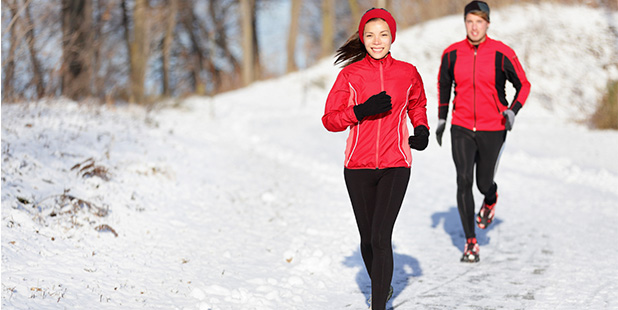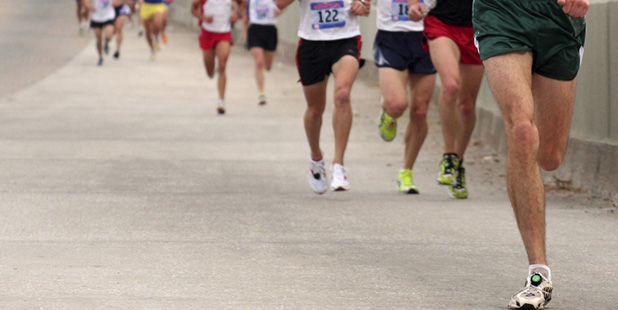Training for triathlons is an excellent way to get and stay in shape, since learning to become a better, faster, and stronger athlete across three sport disciplines is a significant physical challenge.
Depending on where you live, though, triathlon training can be much more accessible and feasible in some parts of the year than others. It’s a no-brainer that you’ll want to swim out in the open water and run and cycle out in the open roads when it’s warm and sunny outside, but what about all those other months of the year when it’s cold, wet, dreary, snowing, or freezing?
Figuring out how to rock your triathlon training year-round, but particularly in the winter months, takes some planning and research, but I think it’s completely doable, provided you manage your expectations accordingly. With a little research to find out what your available options are, and a lot of patience – you may be asking yourself if winter will ever end!? – you’ll be able to get through your winter while still also posting significant accomplishments in your tri training.
Below, you’ll find some of my tips for managing triathlon training during the winter months.
Swimming: commit to masters each week.
Most triathletes I know, as well as people who swear they have no interest in tris, always say that their weakest sport is swimming, and it’s probably with good reason. Compared to the other two disciplines, swimming is arguably the most technical, and it’s no surprise, then, that enlisting the help of a swimming coach – or at least going to the pool when others are there who can help critique your form – will do wonders for your skill.
Obviously when it’s cold outside, you probably will have no interest in swimming outdoors, but you can at least commit to attending masters each week for the duration of the winter. Even if you’re not putting in significant volume when you’re swimming, you can still reap the benefits of instruction and feedback from the masters coaches. Plus, with other people also being there, you can commiserate together.
To further incentivize it, maybe as a reward for working hard at masters all winter, you can treat yourself to a long weekend away to somewhere warm where you could post some open-water swimming at the end of the winter.
Cycling: the trainer will become your new best friend.
When the roads are impassable or simply unsafe to ride, you’ll quickly find that your trainer will become your new best friend. Many triathletes I know loathe the trainer, yet at the same time, if it comes down to riding on the trainer for a few hours or not riding at all, they’ll suck it up and do it.
There are many new online training programs available that will help you more easily pass the time on the trainer, such as Zwift Watopia, that will allow you to virtually ride on courses all over the world. If you’re so inclined, you could even pass the time on the trainer while binge-watching movies or Netflix.
One nice thing about using the trainer is that you are in charge of the climate control, so if you’re training for a race in a warm and humid location, you can adjust your home temperatures accordingly while you’re on the trainer to begin to mimic what you’ll experience on race day.
Running: bundle up with a buddy or stick to the treadmill.
Of all the sports in triathlon, running is probably the most durable, in that you can do it year-round outdoors. Provided you dress for the elements correctly, you may find that winter running is actually a lot of fun!
Obviously, don’t do anything that will jeopardize your health or well-being – if there’s a band of sub-arctic temperatures coming through, it’s probably not a great idea to venture outside – but there’s something to be said for running through some freshly-fallen snow or making snow angels outside after you finish a run. If you’re not all that interested in running in the snow, then naturally you can stay indoors on a treadmill and watch TV while you run in place. I personally love running through the snow, but I realize that it may not be everyone’s cup of tea.
Escape to a hot yoga class.
Even with all the different sports inherent in triathlon training, triathletes will still benefit from devoting some time each week to flexibility and stretching work. If it’s sub-zero outside, you may find the thought of escaping to a yoga class – particularly a hot yoga class – especially enticing. It could be a fun way to mix-up your triathlon training routine, and provided you listen to your body and scale the stretches accordingly, if you’re having any difficulties, your body will likely thank you for the flexibility work, and you’ll leave feeling refreshed and renewed.
Find an indoor triathlon mid-winter.
Finally, I know that some gyms offer their members a chance to participate in indoor triathlons throughout the winter. While it’s obviously not the same as an outdoor triathlon, it could still be a lot of fun to have little time test trials throughout the winter so you can obtain several benchmarks for how your training is faring, without having to wait until the temperatures warm up enough to complete a triathlon outside. Gyms will usually only offer these opportunities to their members, so do your research well in advance if you think you’d want to participate in the event.
While waiting for spring to come might seem like a Sisyphean task when you’re in the middle of triathlon training during the cold, dark, and dreary winter months, know that a little planning will go a long way. It will behoove you to be creative while you wait for spring to show-up, but all the work that you do in those early months will surely pay dividends later, when you’re back outdoors in the open waters or on the open roads.
– Dan




